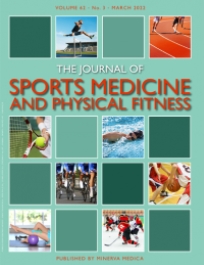Francini L1 2, Castagna C23, Bosio A1, Connolly D4, Induni M1, Cereda F5, Rampinini E1
1. Human Performance Laboratory, MAPEI Sport Research Centre, Olgiate Olona, Varese, Italy;
2. Football Training and Biomechanics Laboratory, Italian Football Federation (FIGC) Technical Department, Coverciano, Florence, Italy;
3. University of Rome Tor Vergata, Rome, Italy;
4. Sport Science Department, Juventus FC, Turin, Italy;
5. Università Cattolica del Sacro Cuore, Milano, Italy.

Abstract
Background: The aim of this study was to examine the associations between maximal and submaximal neuromuscular field tests, match physical activity levels and biological maturation in youth football players.
Methods: Sixty-four football players from under 14 to under 17 age groups were assessed. Players performed a Repeated-Sprint Ability test, Counter Movement Jump, 10-m and 30-m sprint test, as well as an assessment of peripheral muscle function following a multi-stage incremental (i.e. four intensity levels) change of direction test (COD). Knee extensors peak-torque (PTmax) and the decrement of torque values (dec) were considered as COD outcomes. Physical match activities were tracked by GPS technology, while rate of perceived exertion (RPE) was assessed using the CR10 Börg scale. Pearson’s correlations (90% confidence interval) were used to examine the relationships.
Results: Small associations were found between field tests and match activities. The relationships increased from small to moderate for some tests when match data with RPE>5 were considered. The largest associations were found between distance covered <-2.5m·s-2 and both COD PTmax and dec when RPE>5.
Conclusions: The results of the present study provide further evidence of a small-to-moderate association between muscular performance and match work-rate in young football players. Although physical and physiological evaluations fail to precisely estimate the quantity of physical activities performed during matches, it is suggested that they can be utilized to monitor the training effect over time in young football players.
J Sports Med Phys Fitness. 2023 Jan;
PMID: 35230067 DOI: 10.23736/S0022-4707.22.13537-1